EU declaration conformity
Modbus RTU IO module | 3 analogue outputs
Product description
This is a Modbus RTU output module with 3 analogue outputs. They convert the value of a Modbus Holding Register into an analogue output signal.
The default output type is 0-10 VDC. If necessary, a different output type can be selected: 0-10 VDC / 0-20 mA / 0-100 % PWM.
The supply voltage is 24 VDC PoM. This means that both Modbus RTU communication and the power supply can be connected via one RJ45 connector.
This module needs a master unit or BMS system that is able to write a value in the DDACM-03 Modbus Holding registers.
Documents
Additional specifications and description
How it works?
In general, the devices manufactured by Sentera utilize Modbus RTU communication to interact with one another. Modbus RTU is a serial communication protocol that employs RS485 technology. In certain cases, however, Sentera device may need to communicate with non-Sentera products such as a damper actuator or an EC fan, for instance.
The reason why the DDACM-03 has been developed is to facilitate this communication. This module provides three analogue outputs through which commands can be sent to the non-Sentera products. There are three selectable output types: 0-10 VDC, 0-20 mA or 0-100% PWM.
It is important to note that in this product version these outputs are not electrically isolated from the Modbus RTU input.
What are the output types?
The module provides three analogue outputs that can be configured to operate in different modes: 0-10 VDC, 0-20 mA or 0-100% PWM (Pulse Width Modulation).
In the 0-10 VDC mode, the analogue outputs generate voltage signals ranging from 0 volts to 10 volts. The output value is directly proportional to the desired control signal. This is the default setting and is the most commonly used output type in the majority of applications.
In the 0-20 mA mode, the analogue outputs produce current signals ranging from 0 mA to 20 mA. The output value is again directly proportional to the desired control signal.
In the 0-100% PWM mode, the analogue outputs generate a pulse signal with a variable duty cycle. The duty cycle represents the percentage of time the signal is "on" compared to the total period of the pulse. A duty cycle of 0% corresponds to no signal, while a duty cycle of 100% represents a continuous "on" signal.
The choice of which mode to use depends on the requirements of the connected non-Sentera devices and their compatibility with these signal types.
What Is a Modbus Master and Why Is It Needed?
A Modbus master device is required to write the appropriate values to the Modbus registers of the DDACM-03 module and control its analogue outputs. The Modbus Master is a device or software application that initiates and controls the communication on the Modbus network. It sends requests to Modbus Slaves to read or write data and processes the responses received from these Slaves. One such device is Sentera’s DRPUM universal controller. This DIN rail mounted controller requires application dedicated firmware. Via an internet gateway, the controller can be connected to SenteraWeb - the online HVAC portal of Sentera. Via SenteraWeb, you can select the desired application and download the application specific firmware into the connected devices. The master device can set the outputs by writing values to Modbus Holding registers 12, 16, and 20.
What are the LED indications showing?
The DDACM-03 module has three RGB LEDs that provide status functional indications for the outputs. During normal operation with an output value greater than 0, the LED is green. When the output is 0, the LED is yellow. If there is a hardware or Modbus-related issue, the LED turns red to indicate a problem.
How to mount it?
The DDACM-03 module is designed for DIN rail mounting. It can be easily attached to a DIN rail using the locking clip.
The module's Modbus RTU communication and 24 VDC power supply are connected through an RJ45 socket. For convenient wiring, Sentera recommends using their 24 VDC power supplies with an RJ45 socket that are also DIN rail mounted.
The module's enclosure provides an IP30 protection rating, which means it offers some protection against the ingress of dust and moisture.
In general, the devices manufactured by Sentera utilize Modbus RTU communication to interact with one another. Modbus RTU is a serial communication protocol that employs RS485 technology. In certain cases, however, Sentera device may need to communicate with non-Sentera products such as a damper actuator or an EC fan, for instance.
The reason why the DDACM-03 has been developed is to facilitate this communication. This module provides three analogue outputs through which commands can be sent to the non-Sentera products. There are three selectable output types: 0-10 VDC, 0-20 mA or 0-100% PWM.
It is important to note that in this product version these outputs are not electrically isolated from the Modbus RTU input.
What are the output types?
The module provides three analogue outputs that can be configured to operate in different modes: 0-10 VDC, 0-20 mA or 0-100% PWM (Pulse Width Modulation).
In the 0-10 VDC mode, the analogue outputs generate voltage signals ranging from 0 volts to 10 volts. The output value is directly proportional to the desired control signal. This is the default setting and is the most commonly used output type in the majority of applications.
In the 0-20 mA mode, the analogue outputs produce current signals ranging from 0 mA to 20 mA. The output value is again directly proportional to the desired control signal.
In the 0-100% PWM mode, the analogue outputs generate a pulse signal with a variable duty cycle. The duty cycle represents the percentage of time the signal is "on" compared to the total period of the pulse. A duty cycle of 0% corresponds to no signal, while a duty cycle of 100% represents a continuous "on" signal.
The choice of which mode to use depends on the requirements of the connected non-Sentera devices and their compatibility with these signal types.
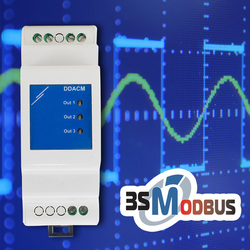
What Is a Modbus Master and Why Is It Needed?
A Modbus master device is required to write the appropriate values to the Modbus registers of the DDACM-03 module and control its analogue outputs. The Modbus Master is a device or software application that initiates and controls the communication on the Modbus network. It sends requests to Modbus Slaves to read or write data and processes the responses received from these Slaves. One such device is Sentera’s DRPUM universal controller. This DIN rail mounted controller requires application dedicated firmware. Via an internet gateway, the controller can be connected to SenteraWeb - the online HVAC portal of Sentera. Via SenteraWeb, you can select the desired application and download the application specific firmware into the connected devices. The master device can set the outputs by writing values to Modbus Holding registers 12, 16, and 20.
What are the LED indications showing?
The DDACM-03 module has three RGB LEDs that provide status functional indications for the outputs. During normal operation with an output value greater than 0, the LED is green. When the output is 0, the LED is yellow. If there is a hardware or Modbus-related issue, the LED turns red to indicate a problem.
How to mount it?
The DDACM-03 module is designed for DIN rail mounting. It can be easily attached to a DIN rail using the locking clip.
The module's Modbus RTU communication and 24 VDC power supply are connected through an RJ45 socket. For convenient wiring, Sentera recommends using their 24 VDC power supplies with an RJ45 socket that are also DIN rail mounted.
The module's enclosure provides an IP30 protection rating, which means it offers some protection against the ingress of dust and moisture.

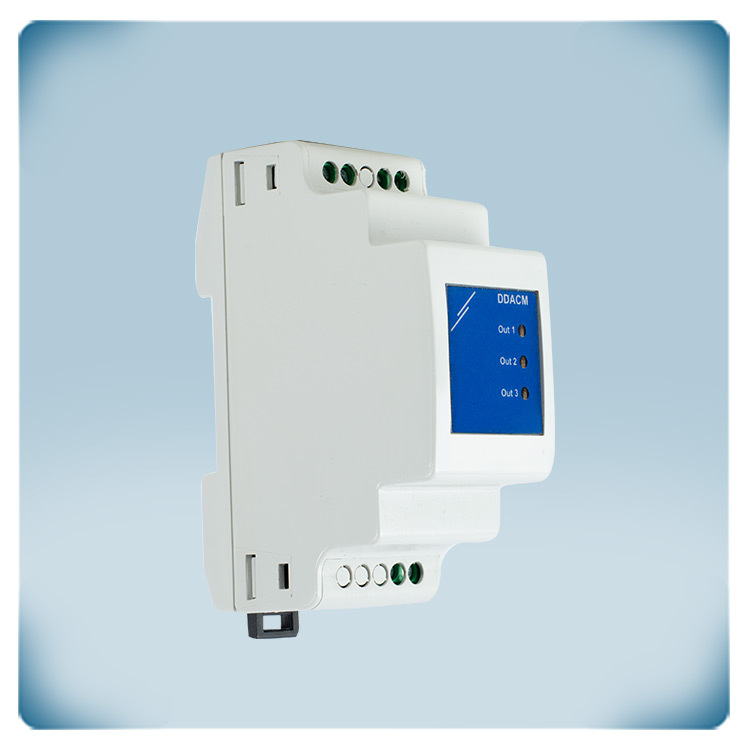
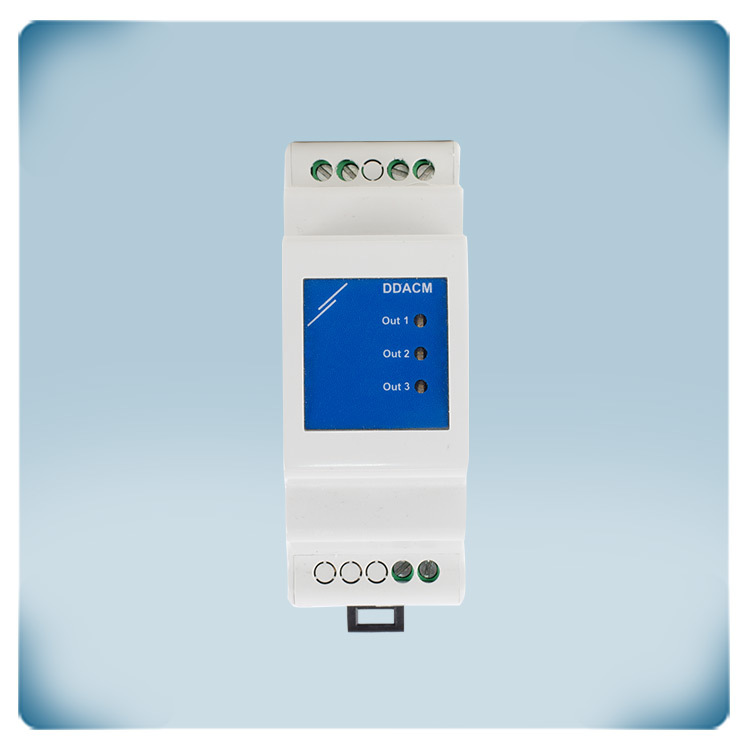
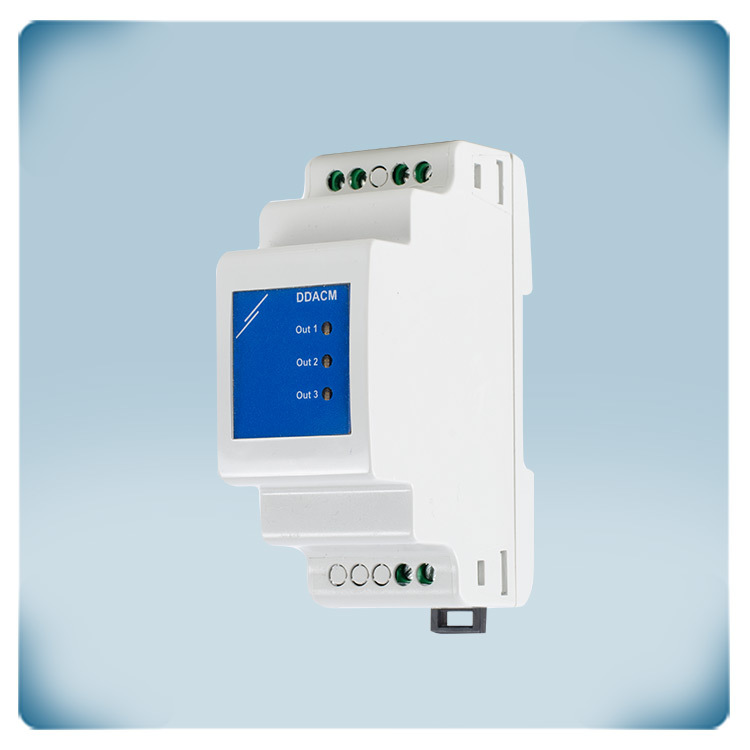
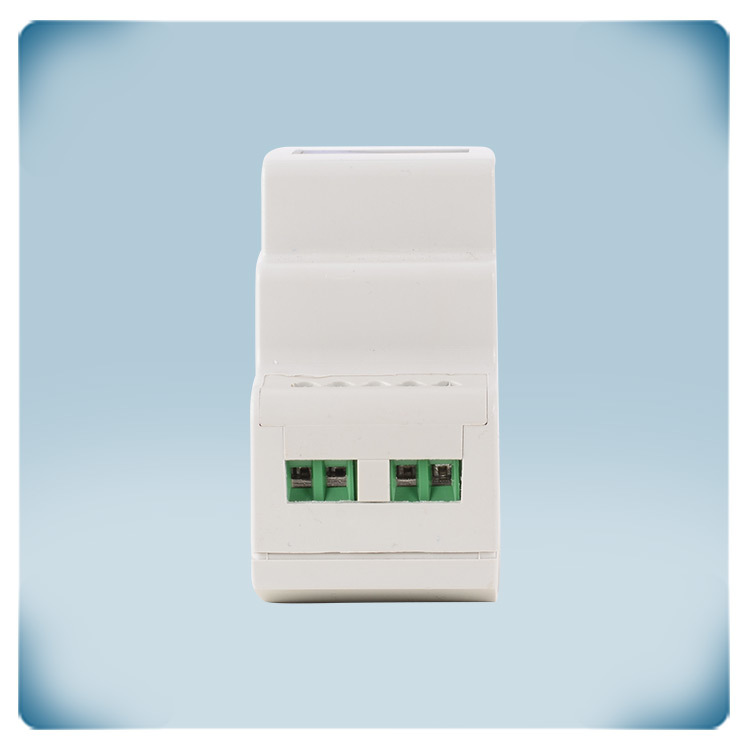
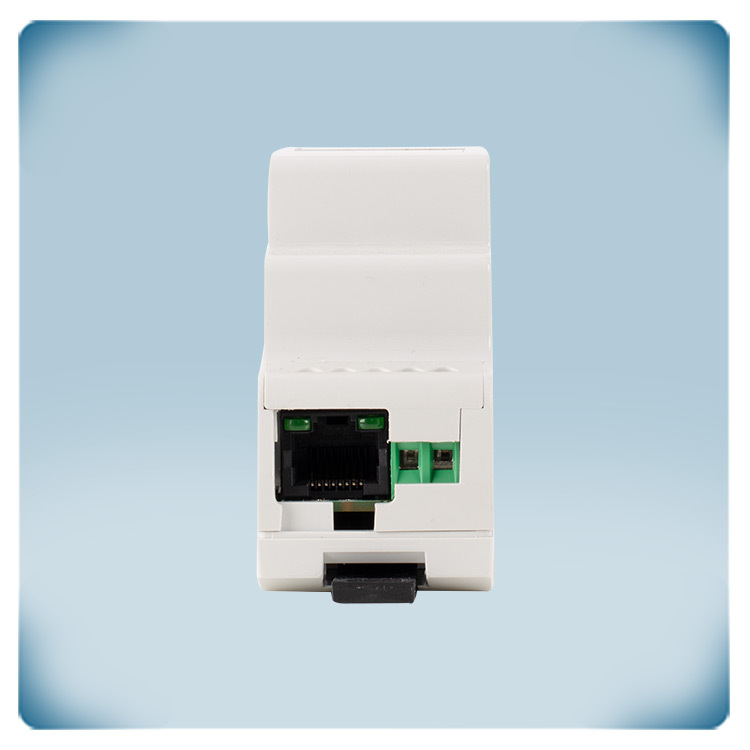
.webp)
.webp)
.webp)
.webp)
.webp)


Remarks, reviews & ratings